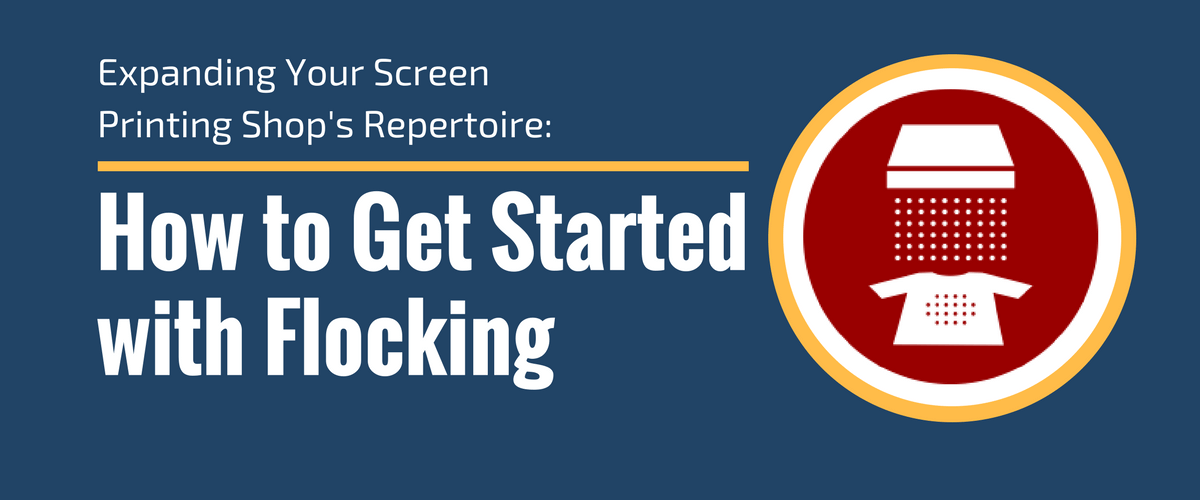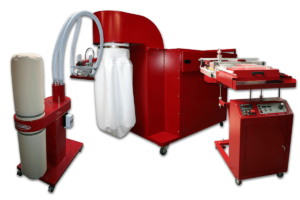

Revolucionando la industria de la serigrafía a través de tecnología de punta y servicio de calidad
Anatol Equipment Manufacturing Co.
1429 S Shields Dr
Waukegan, IL 60085


Revolucionando la industria de la serigrafía a través de tecnología de punta y servicio de calidad
Anatol Equipment Manufacturing Co.
1429 S Shields Dr
Waukegan, IL 60085

Expanding the capabilities in your screen printing shop to include flock printing can allow you to create high-end specialty prints that help attract new customers and charge higher prices. If you’re looking to add interesting effects to your screen printing shop, here’s what you need to know about flocking.
Flocking is a centuries-old process that involves laying down short, thin fibers on an adhesive to create a textured surface. In its modern screen printing applications, printers lay down an adhesive design and then add short fibers, usually in rayon or polyester, so that prints have a textured, 3D look. In screen printing, flocking can be used a single-color process, or it can be used to create multicolor prints. Flocking generally works best with vector images of 3 colors or less that don’t have a lot of fine detail; however, the best flock printers can use flocking to create or accent photorealistic prints.
The method used to flock prints depends on the scope of the shop’s flocking operation. The basic process, however, is always the same: An adhesive is applied to the garment in the desired pattern, and the flocking is applied to the adhesive. To ensure that the flocking fibers “stand up” in the same direction to create a soft, even texture, a negative electric charge is emitted above the fibers, which are grounded to a metal pallet, before the print is cured.
In large-scale flocking operations, specialized printers are used for the job. The adhesive is applied, the flocking is sprinkled onto the adhesive from an automatic hopper, and the garment is passed under a station that blasts the print with the negative electric charge. The garment then travels through a dryer, as any screen print would, to cure the adhesive.

Anatol’s flocking system allows you to easily add
flocking to your existing screen printing setup.
For printers who want to offer flocking on a smaller scale, hand-held flocking devices are available. Generally, using a manual printer fitted with metal pallets to allow for grounding, the adhesive is applied and flash cured. The flocking is sprinkled on, and then the hand-held flocking unit provides the negative current with the press of a button. Excess flocking is removed either with a vacuum designed for the job or a blast of compressed air. Then, the print is cured.
An easier way to offer flocking is with heat transfers. You can buy and cut sheets of flocking that can be heat transferred, or you can opt to order flocking cut to your design from a supplier and transfer the image using your shop’s heat transfer press.
As with any type of printing, there are “dos” and “don’ts” that lend to successful flocking. Some things you should know before you flock include:
Only you know if flocking is right for your screen printing shop. It is a printing method to be considered, however. Few printers offer flocking, so it can set your shop apart. It also allows you to have fun creating new textures and looks for your garments, and it can help you avoid problems like dye migration. And finally, offering flocking can be a quick and relatively inexpensive proposition for your shop. You can enter the market at nearly any price point, depending on whether you want to heat transfer your flocking or invest in starter flocking equipment.
Want to give some other special effects a try? Check out these blog posts for tips:
Screen Printing That Pops: Getting Started with Metal Flake Ink
Your message was successfully sent!